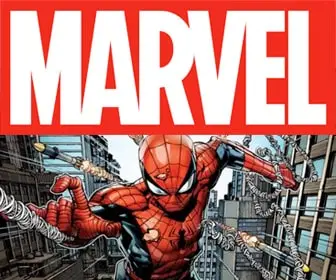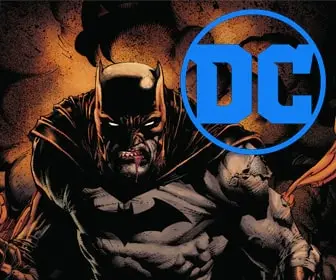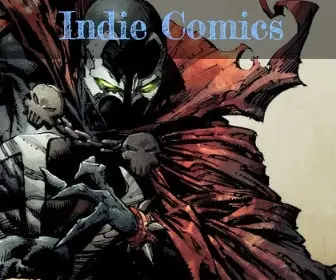
From Superheroes to Survival: How Graphic Novels Became Literature in the 1980s
From Bam! Pow! to Book Reviews?
Remember those Saturday mornings spent glued to the TV, watching heroes in capes fight crime? Well, comic books, the inspiration for those shows, were once seen as just for kids. Filled with colorful costumes, sound effects like “Bam!” and “Pow!”, and fantastical stories, comics weren’t exactly considered serious literature. But in the 1980s, things started to change. Enter the graphic novel.
Graphic novels are basically longer, more complex comic books. They trade in the short, punchy stories for in-depth narratives that can tackle mature themes. Imagine a full-fledged novel told through pictures and words, not just superheroes punching villains. This shift in the 1980s meant comic books weren’t just about entertainment anymore. They were ready to take on weighty subjects and be recognized as a legitimate form of literature, right alongside novels and plays. So, how did comic books shed their kiddie image and become graphic novels worthy of book reviews? Let’s turn the page and find out!
The Pioneers: Leading the Charge for Graphic Novels
The 1980s graphic novel boom didn’t appear out of thin air. We can trace its roots back to comic book creator Will Eisner and his groundbreaking work, “The Contract with God Trilogy.” Published in 1978, this trilogy wasn’t your typical superhero story. Eisner, a giant in the comic book industry, wasn’t new to the scene. He had already created characters like The Spirit and helped shape the way comic books looked and told stories. But with “The Contract with God Trilogy,” he decided to push boundaries.
Eisner’s trilogy wasn’t set in a fictional city with costumed heroes. Instead, it explored the everyday lives of working-class people in a New York City neighborhood during the Great Depression. The stories tackled tough issues like poverty, religion, and the struggles of everyday people. Eisner used his art in a fresh way, with a unique style that wasn’t all about flashy action scenes. This, along with his mature themes, helped challenge the idea that comic books were just for kids. Eisner’s work paved the way for graphic novels by showing what comics could truly be: a powerful tool for storytelling that could grapple with real-world issues.
While “The Contract with God Trilogy” was a major turning point, it wasn’t the only work that foreshadowed the graphic novel movement. Other creators started experimenting with longer, more complex comic book stories that explored mature themes. These early works helped set the stage for the explosion of graphic novels that would hit in the 1980s.
Maus: A Mouse Tale of a Monstrous Time
But the graphic novel that really shattered the mold and forced people to take comic books seriously was Art Spiegelman’s “Maus.” Published in 1986, “Maus” wasn’t just another superhero adventure. It tackled a horrific subject: the Holocaust, the systematic genocide of Jews by the Nazi regime in World War II.
Spiegelman’s story wasn’t just about the Holocaust in general, though. It was a personal one. “Maus” tells the story of Spiegelman interviewing his father, Vladek, a Holocaust survivor. Vladek recounts his experiences during the war, the fear, the prejudice, and the fight for survival.
Here’s where things get interesting. Spiegelman uses a unique technique to tell this story. He portrays Jews as mice, Germans as cats, and Poles as pigs. This might sound strange at first, but it actually serves a purpose. By using animals, Spiegelman creates a distance from the horrific reality of the Holocaust, making it easier for readers to face the story.
But don’t be fooled by the cute mice. “Maus” doesn’t shy away from the brutality of the Holocaust. Spiegelman’s art style is powerful, and his father’s story is harrowing. Yet, “Maus” achieved something incredible. It won a Pulitzer Prize, one of the most prestigious awards in literature, proving that graphic novels could be just as serious and impactful as any other form of writing. “Maus” broke down barriers and helped solidify the graphic novel as a respected form of literature.
Beyond Maus: A Universe of Graphic Novels Emerges
“Maus” might have been a game-changer, but it wasn’t alone. The 1980s saw a whole new wave of graphic novels hit the shelves, proving that the genre wasn’t a one-hit wonder. These new graphic novels explored all sorts of themes, not just historical tragedies.
Take Alan Moore’s “Watchmen” (1986) for example. This graphic novel deconstructed the superhero genre, asking what it truly means to be a hero in a complex world. On the other hand, graphic novels like Alison Bechdel’s “Fun Home” (1983) delved into personal experiences, exploring themes of sexuality and family relationships.
The possibilities seemed endless. History buffs could dive into graphic novel biographies or historical fiction. Fans of fantasy and sci-fi could find graphic novels that pushed the boundaries of imagination. Social issues like race, poverty, and war were also tackled in powerful graphic novels. This diversity of themes showed that graphic novels could truly be a medium for any kind of story.
Collectors
Here are 5 graphic novels that every fan of the 1980s should own:
- Maus by Art Spiegelman (1986)
A Pulitzer Prize-winning graphic novel that tells the story of the Holocaust through the eyes of a mouse. This powerful and disturbing book is a must-read for anyone interested in history or graphic novels.
A deconstruction of the superhero genre, Watchmen asks what it truly means to be a hero in a complex world. This groundbreaking graphic novel is considered one of the greatest of all time.
An aging Batman must come out of retirement to save Gotham City from a new wave of crime. This dark and gritty story helped to redefine Batman for a new generation.
- Sandman by Neil Gaiman (1988-1996)
A sprawling epic that follows Morpheus, the Lord of Dreams, on a journey to reclaim his power. Sandman is a beautiful and imaginative story that has captivated readers for decades.
- Fun Home by Alison Bechdel (1983)
A graphic memoir about Bechdel’s coming-of-age and her relationship with her father. Fun Home is a funny, moving, and honest look at family, sexuality, and identity.
These are just a few of the many great graphic novels that came out of the 1980s. With so many great choices to pick from, you’re sure to find something you’ll love.
Conclusion: Words and Pictures Become a Literary Force
So, what made graphic novels take off in the 1980s? A few things were at play. Creators like Will Eisner pushed the boundaries of storytelling in comic books, tackling mature themes and using art in new ways. Then came graphic novels like “Maus” that proved comics could handle serious subjects with depth and emotional weight. Finally, a new wave of graphic novels emerged, exploring a wide range of themes, from history to fantasy to personal stories.
The graphic novel boom of the 1980s wasn’t just a fad. It forever changed the way people saw comic books. Today, graphic novels are a recognized form of literature, finding their place on library shelves and bestseller lists. From superheroes to historical fiction, graphic novels offer a unique way to tell stories that’s both entertaining and thought-provoking. So next time you’re at the bookstore, don’t be afraid to explore the graphic novel section. You might just be surprised by the incredible stories waiting to be discovered.














